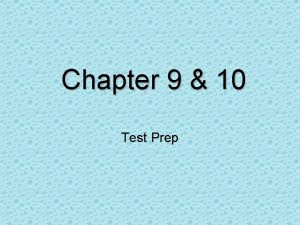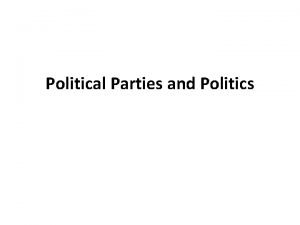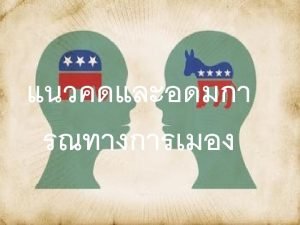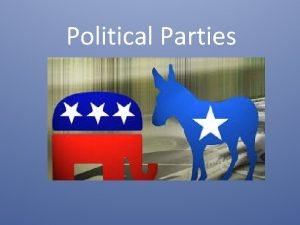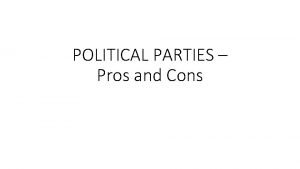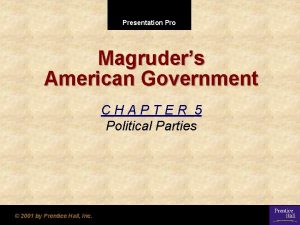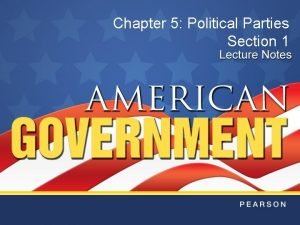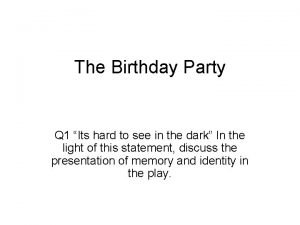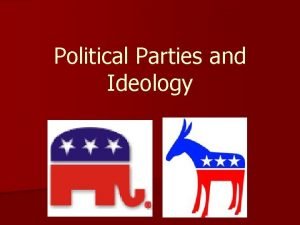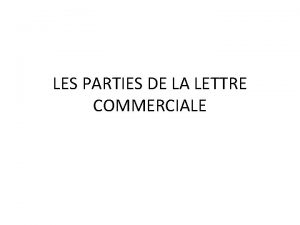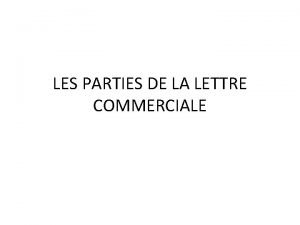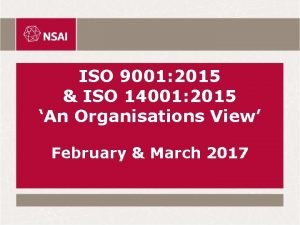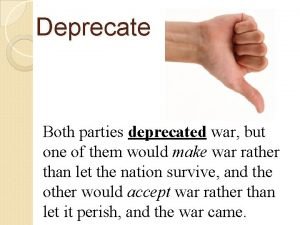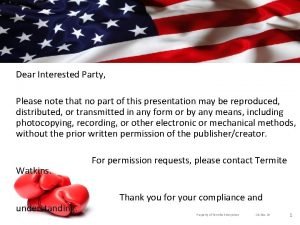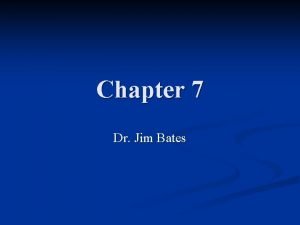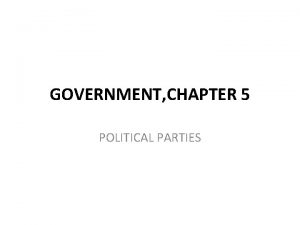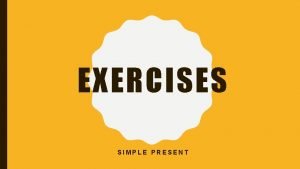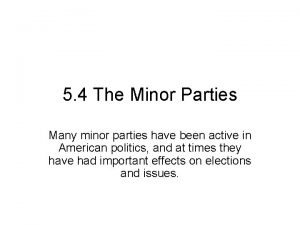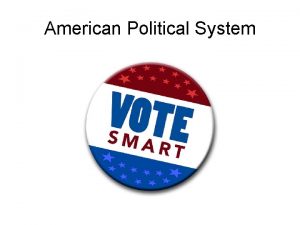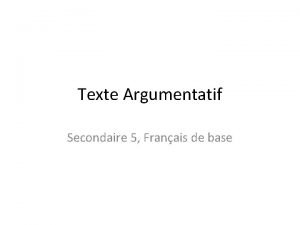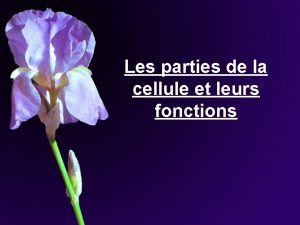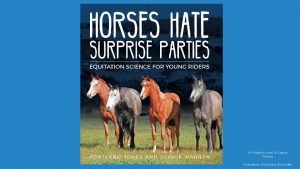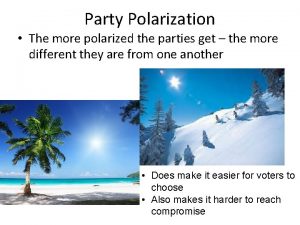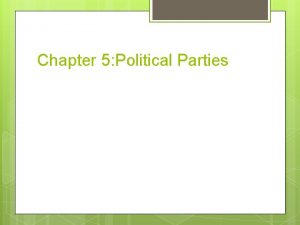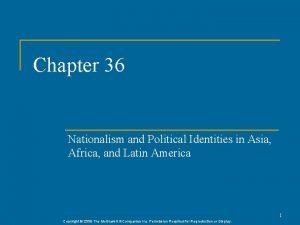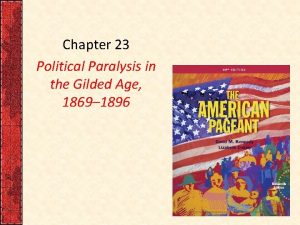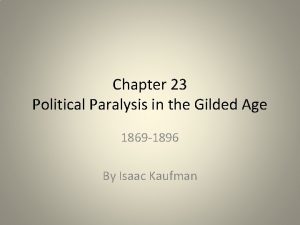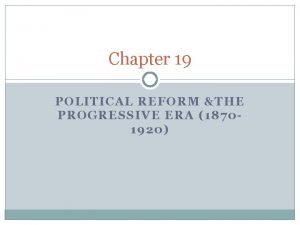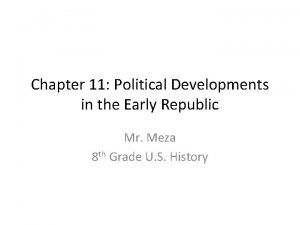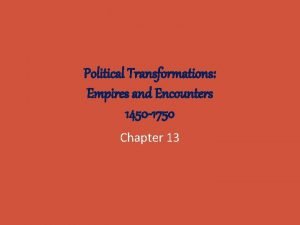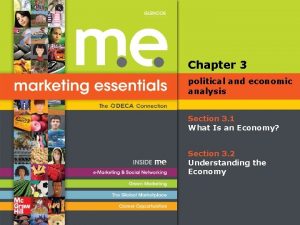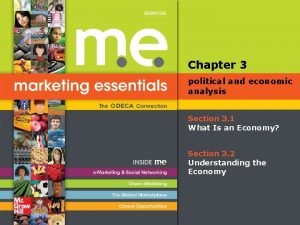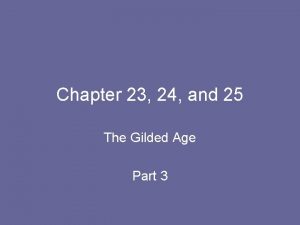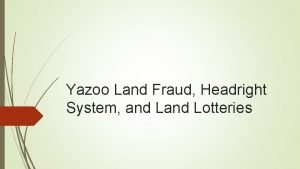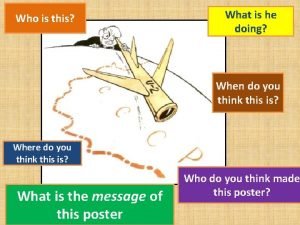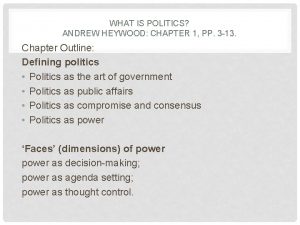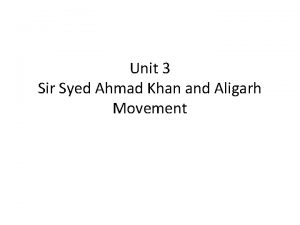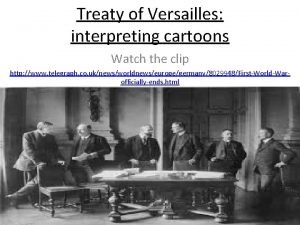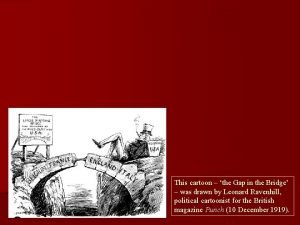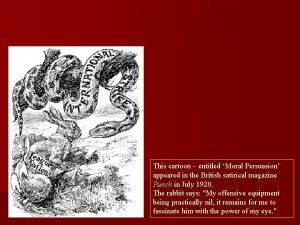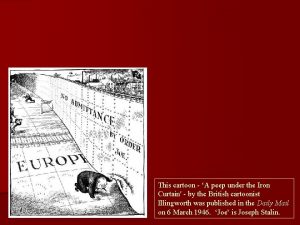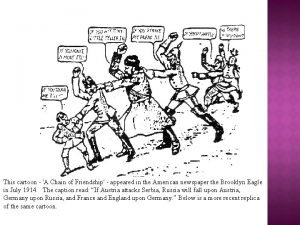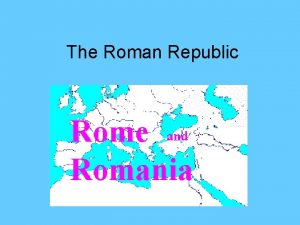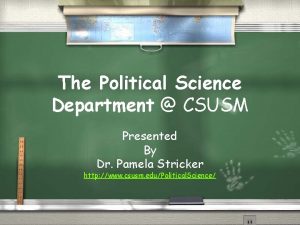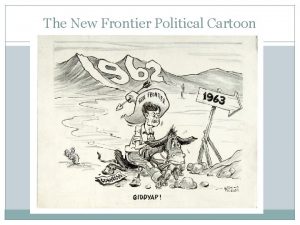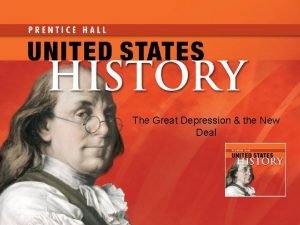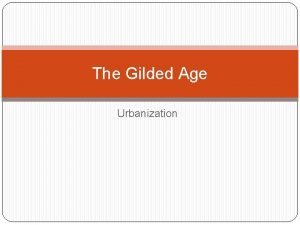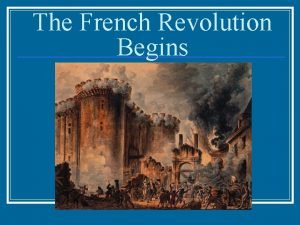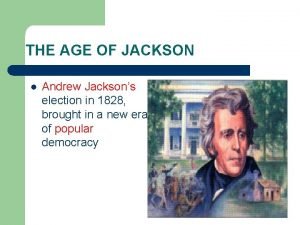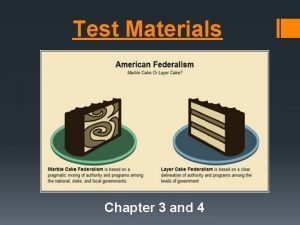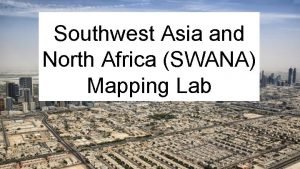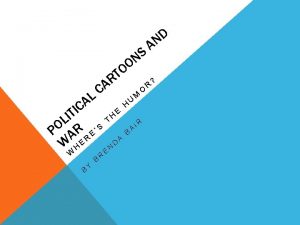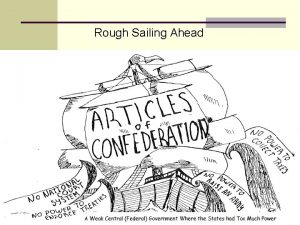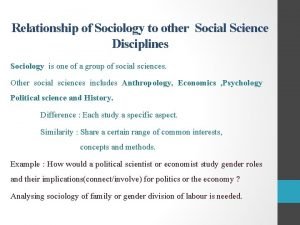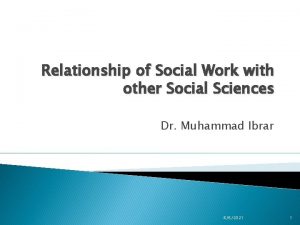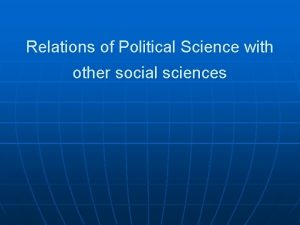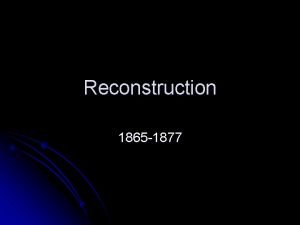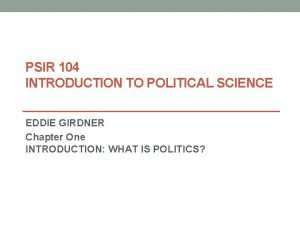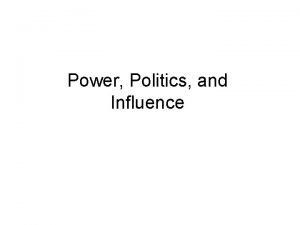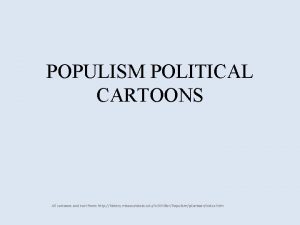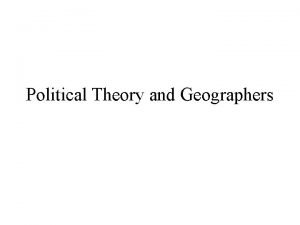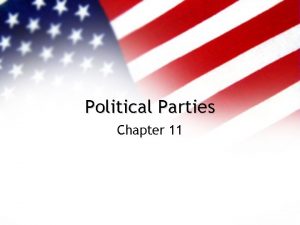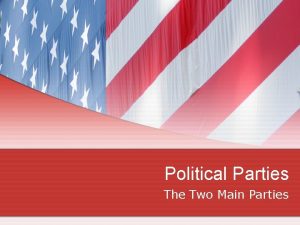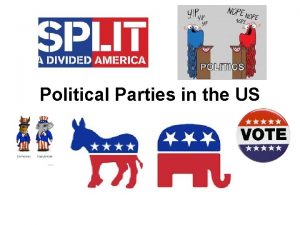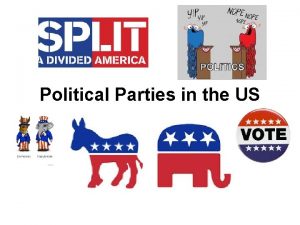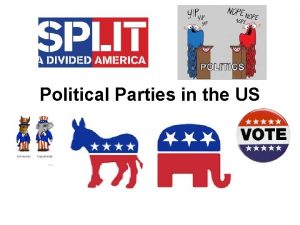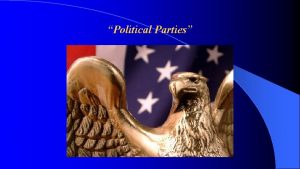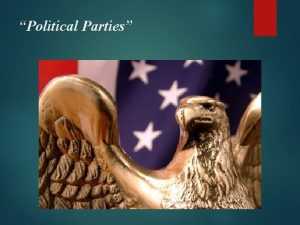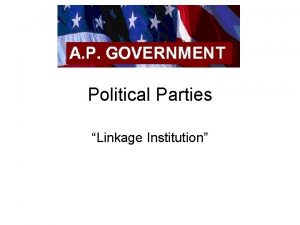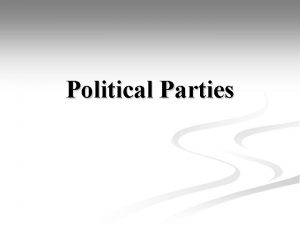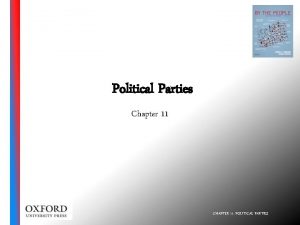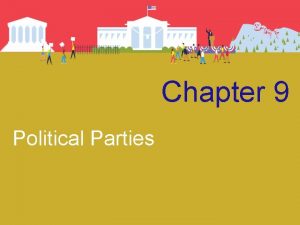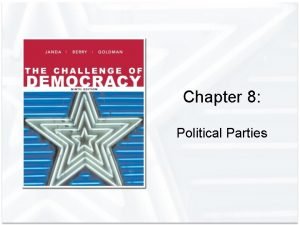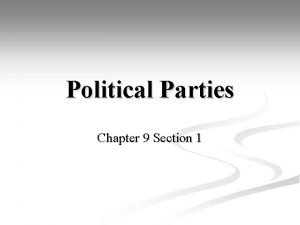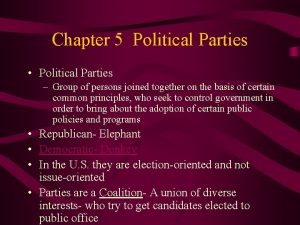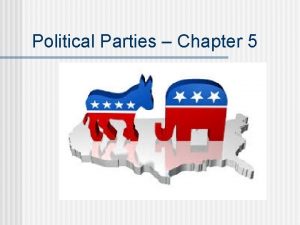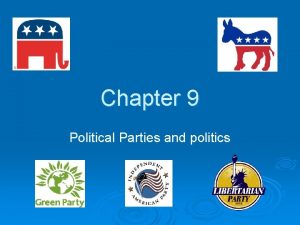Chapter 8 Political Parties Chapter 8 Political Parties





















































































- Slides: 85

Chapter 8: Political Parties

Chapter 8: Political Parties Objectives: • Explain essential characteristics of political system of the United States, including the organization and function of political parties and the process of selecting political leaders. Essential Question: • How do citizens, both individually and collectively, influence government policy?

Chapter 8 -1: History of Political Parties Vocabulary: 1. Political party 2. Two-party system 3. Stress 4. Promote 5. Third party 6. Platform

• Link Video: Electing the President: Media and the Presidency

Chapter 8 -1: History of Political Parties As you read p. 248 -253 complete the graphic organizer to identify the major political parties in the U. S. and their position on a number of issues. Party Position on Issues

Political Parties are organizations of individuals with broad common interests

Two-Party System government that has two major political parties The US is considered a two-party system because they have won most of the elections to government offices.

Alexander Hamilton, leader of the Federalist Party, believed in a strong national government.

Thomas Jefferson, leader of the Democratic. Republican Party, believed that strong state governments would protect individual rights better than a strong national government because states are closer to the citizens.

favored limited powers for the national government

Chapter 8 -1: History of Political Parties • Federalist party lost support and faded away. • By 1828 Democratic-Republican Party split. Democratic Party supported Jackson National Republican opposed Jackson

Chapter 8 -1: History of Political Parties • Whig Party tried to win support by proposing internal improvements – road and canals • Avoided controversial issue of slavery.

Party created in 1854 by people who were opposed to slavery, breakaway group of Democrats and Whigs

Abraham Lincoln first Republican ever elected President

Third Parties smaller, minor parties, never won a presidential election Ross Perot led the Reform Party in the 1990 s

Third Parties • Populist Party in the 1890 s called for Senators to be elected by voters. They also favored an 8 hour work day. Wanted voters to have a more direct role in government

Third Parties • Ralph Nader run as the presidential candidate of the Green Party, which wants policies that favor the environment.

Third Parties Single-Issue Party--Prohibition Party—ban the sale of alcohol

Third Parties • Communist Party USA—believed that the government or workers should own all resources and businesses.

Most Democracies have more than two political parties.

Democracies Many democracies have multi-party systems. Canada has a 3 party system.

Chapter 8 -1: History of Political Parties • France has more than eight • Isreal has more than twenty.

One-Party Systems China has only one party—the communist party. Elections are for show. One party systems are not democratic.

Democratic Party favor government support of housing, income, eduction and jobs for the poor.

Chapter 8 -1: History of Political Parties • The Northeast region of the United States has traditionally supported the Democratic party that believes the government should be more involved in regulating the economy.

Republican Party favor less government regulation on economy.

Chapter 8 -1: History of Political Parties • Republican support is very strong in the South.

Platform series of statements describing a political party’s beliefs and positions - Plank individual part of the platform


Chapter 8 Section 2 Political Parties Today

Chapter 8. 2: Political Parties Today Vocabulary: 1. National committee 2. Caucus 3. Precinct 4. adjacent 5. Political machine 6. Direct primary 7. Closed primary 8. Open primary 9. Plurality 10. majority

Chapter 8. 2: Political Parties Today • Link Video: Roosevelt Nominated to Fourth Term • . . DownloadsRoosevelt. Nominatedfor. Fou rth. Term. mp 4

Chapter 8. 2: Political Parties Today • As you read p. 254 -261 complete the graphic organizer to identify the roles of political parties. Political Party Roles

A citizen does not need to belong to a political party in order to vote in the United States.

Watchdog role of the party that is out of power; to check action of party that is in power.

Congressional Campaign Committees help elect party members.

A certain number of qualified voters must sign a petition to get a third-party candidate’s name on the ballot

Petition paper signed by voters declaring support for a candidate; Any candidate may run for a general election by submitting a petition;

Party Supporter most likely to help make sure other party supporters go to the polls on election day

Example Alabama

Open Primary voters do not need to declare their party preference in order to vote for the party’s nominees

Plurality the most votes needed to win a primary election

Majority more than 50 percent of the total votes.

Example Florida

Closed Primary voters register with the party before a primary election, and vote in that party they; prevents people from other parties from nominating a weak candidate

example New York City’s Tammany Hall

Political Machines very strong local political organization, harmful for the democratic process

Precinct Captain works at the local level to support a political party

State Political Committee focus on electing party candidates to state position; the role of a party committee at the county level is to support party efforts at the local, state, and national levels.

National Political Committee raise money for candidates; Presidential

National Convention delegates write a party’s platform

leads fund-raising efforts

Caucus meeting of state and local party organizations, way some states choose presidential candidates


Chapter 9 Lesson 1 Bell Ringer Copy questions and underline answers.

Chapter 9. 1 Who Can Vote? • Vocabulary 9. 1 1. Principle 2. Suffrage 3. Register 4. Polling place 5. Ballot 6. Voter turnout rate 7. apathy

Chapter 9. 1 Who Can Vote? • Video Link: Who Chooses to Vote and Why

Chapter 9. 1 Who Can Vote? • As you read p. 268 -275 complete the flow chart on suffrage. Identify and explain who gaine the right to vote. Add additional boxes if necessary. 15 th Amendment: No person can be denied the right to vote because of race or color.

*Suffrage right to vote, Only white, male landowner were allowed to vote in the early years of our nation reformers have fought to extend suffrage to groups such as African Americans and women

*Fifteenth Amendment 1870 forbids denial of right to vote based on race, many Southern states passed laws to keep African Americans from voting.

Nineteenth Amendment ratified in 1920. Women first won the right to vote at the state level. Alice Paul helped to draw attention to the issue of woman suffrage.

Twenty-third Amendment grants the residents of Washington, D. C. the right to vote for president and vice president.

Twenty-fourth Amendment prohibited the poll tax in national elections.

Twenty-Sixth Amendment lowered the voting age to 18

Justice Department gained the right to sue to protect voting rights in certain states with the Civil Rights Act of 1957.

Voting Rights Act of 1965 outlawed literacy tests.

Congressional Act of 1924 citizenship for Native Americans

Chapter 9. 1 Who Can Vote? • As you read p. 272 -275 create a chart that list the step in the voting process. 1. Register to vote 2. Become informed 3. Cast a ballet


Registering first step in the voting process, be able to prove your age and citizenship

National Voter Registration Act made it easier to register to vote. Another name for the National Voter Registration Act is the “Motor Voter” law allowed drivers license to work for ID for Registering.

Precinct has one polling place.

Absentee Ballot is a method of voting for people who cannot go to the polls on Election Day In many states, people who will be traveling on Election Day may vote by absentee ballot or early voting.

Punch Card type of ballot.

Bilingual Ballots required by federal law in certain areas of the country.

President Lyndon B. Johnson called the right to vote “the most powerful instrument ever devised … for breaking down injustice. ”

Voter Turnout 52 out of 100 eligible people vote in an election, the voter turnout rate is 52 percent; One major reason people do not vote is because they fail to register

Chapter 9. 1 Who Can Vote? Apathy: A lack of interest, about political participation and voting.

Bush v. Gore decided the outcome of the 2000 presidential election; Bush v. Gore, the Supreme Court ordered the recounting of votes to stop.


Chapter 9. 2: Elections and Campaigns

Chapter 9. 2: Elections and Campaigns • Vocabulary: 1. Issue 2. Initiative 3. Referendum 4. Recall 5. Electoral College 6. Popular vote 7. Winner-take-all system 8. pursue 9. Canvas 10. Political action committee

Chapter 9. 2: Elections and Campaigns • Link Video: The Federal Government and the Electoral College

Chapter 9. 2: Elections and Campaigns • As you read p. 277 -283 complete the table stating the purpose of different types of elections. Types of Elections Purpose

Electors cast electoral votes for president and vice president.
 Brainpop voting
Brainpop voting What was one way progressives differed from populists
What was one way progressives differed from populists Political parties
Political parties The supreme court change
The supreme court change Political party
Political party Sistemas democraticos
Sistemas democraticos Political parties
Political parties Political parties pros and cons
Political parties pros and cons Examples of economic protest parties
Examples of economic protest parties Chapter 5 section 1 parties and what they do
Chapter 5 section 1 parties and what they do Chapter 5 section 1 parties and what they do
Chapter 5 section 1 parties and what they do Birthday party analysis
Birthday party analysis Define ideological parties
Define ideological parties Food spree meaning
Food spree meaning Les parties de la lettre commerciale
Les parties de la lettre commerciale La lettre commerciale
La lettre commerciale Partie du corps dauphin
Partie du corps dauphin Iso 14001 swot analysis example
Iso 14001 swot analysis example Deprecated war definition
Deprecated war definition Dear interested
Dear interested Microscope et ses parties
Microscope et ses parties Why does gatsby stop giving parties?
Why does gatsby stop giving parties? The smallest unit of election administration
The smallest unit of election administration Sarah and pam often go to parties
Sarah and pam often go to parties Plan de texte narratif
Plan de texte narratif Accounting information system chapter 1
Accounting information system chapter 1 What are the four types of minor parties
What are the four types of minor parties Socialist parties
Socialist parties Texte incitatif
Texte incitatif Membrana tympani
Membrana tympani Comparaison entre cellule animale et végétale
Comparaison entre cellule animale et végétale The great gatsby jeopardy
The great gatsby jeopardy Power point parties
Power point parties Horses hate surprise parties
Horses hate surprise parties Innovator role of minor parties
Innovator role of minor parties Schéma installation fibre optique maison individuelle
Schéma installation fibre optique maison individuelle Splinter parties definition
Splinter parties definition Chapter 35 nationalism and political identities in asia
Chapter 35 nationalism and political identities in asia Chapter 36 nationalism and political identities in asia
Chapter 36 nationalism and political identities in asia Chapter 23 political paralysis in the gilded age
Chapter 23 political paralysis in the gilded age Chapter 23: political paralysis in the gilded age
Chapter 23: political paralysis in the gilded age Chapter 19 political reform and the progressive era
Chapter 19 political reform and the progressive era Political developments in the early republic
Political developments in the early republic Chapter 5 political transformations empires and encounters
Chapter 5 political transformations empires and encounters Chapter 3 political and economic analysis
Chapter 3 political and economic analysis Chapter 3 political and economic analysis
Chapter 3 political and economic analysis Chapter 23 political paralysis in the gilded age
Chapter 23 political paralysis in the gilded age Define headright system
Define headright system Umass lowell political science
Umass lowell political science U2 spy plane political cartoon
U2 spy plane political cartoon Political agendas examples
Political agendas examples Political weaknesses of the articles of confederation
Political weaknesses of the articles of confederation Carnegie political cartoon
Carnegie political cartoon Political services of sir syed ahmad khan
Political services of sir syed ahmad khan Date
Date League of nations the gap in the bridge
League of nations the gap in the bridge League of nations rabbit and snake cartoon
League of nations rabbit and snake cartoon Iron curtain political cartoon analysis
Iron curtain political cartoon analysis The chain of friendship political cartoon analysis
The chain of friendship political cartoon analysis Rendezvous political cartoon meaning
Rendezvous political cartoon meaning Roman political structure
Roman political structure Cyrus masroori
Cyrus masroori Jfk cartoon
Jfk cartoon The ingenious quarterback analysis
The ingenious quarterback analysis Urbanization gilded age political cartoons
Urbanization gilded age political cartoons Political causes in french revolution
Political causes in french revolution The french revolution political cartoon
The french revolution political cartoon Any planned combination of education political
Any planned combination of education political Power age political
Power age political Political socialization cartoon
Political socialization cartoon Stock market crash political cartoon
Stock market crash political cartoon Great stock market crash 1929
Great stock market crash 1929 Swana physical map
Swana physical map South west asia and north africa map
South west asia and north africa map Ho hum when he's finished pecking down
Ho hum when he's finished pecking down Rough sailing ahead political cartoon source
Rough sailing ahead political cartoon source Sociology social science
Sociology social science Relationship between political science and social work
Relationship between political science and social work Difference between sociology and political science
Difference between sociology and political science Why is this political cartoon called “one less vote?”
Why is this political cartoon called “one less vote?” Subfields of political science
Subfields of political science Political feasibility
Political feasibility Unethical political tactics and strategies
Unethical political tactics and strategies Populism political cartoons
Populism political cartoons Genetic boundary
Genetic boundary Political spectru,
Political spectru,

